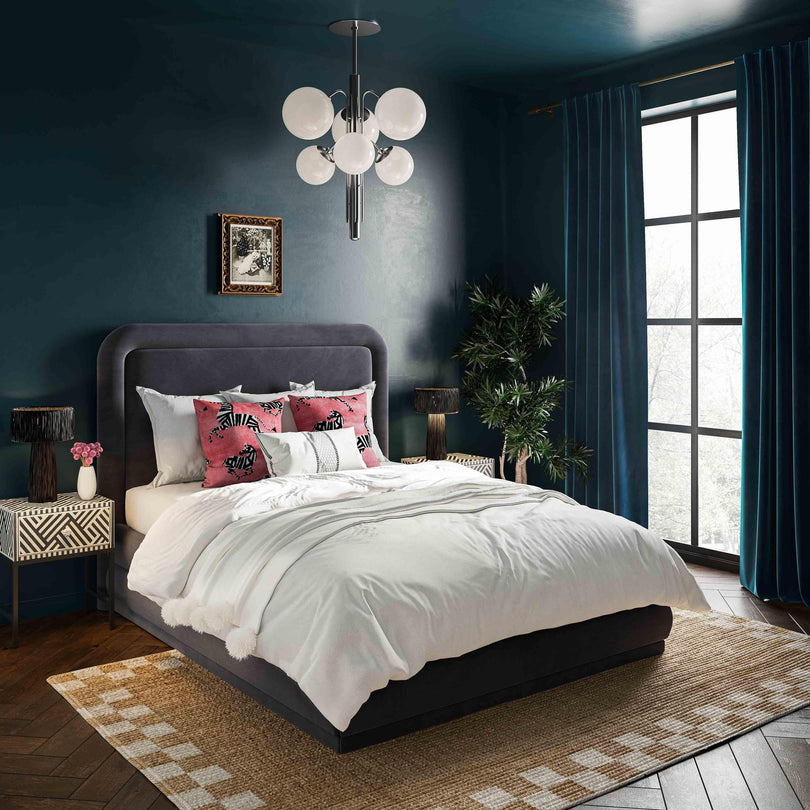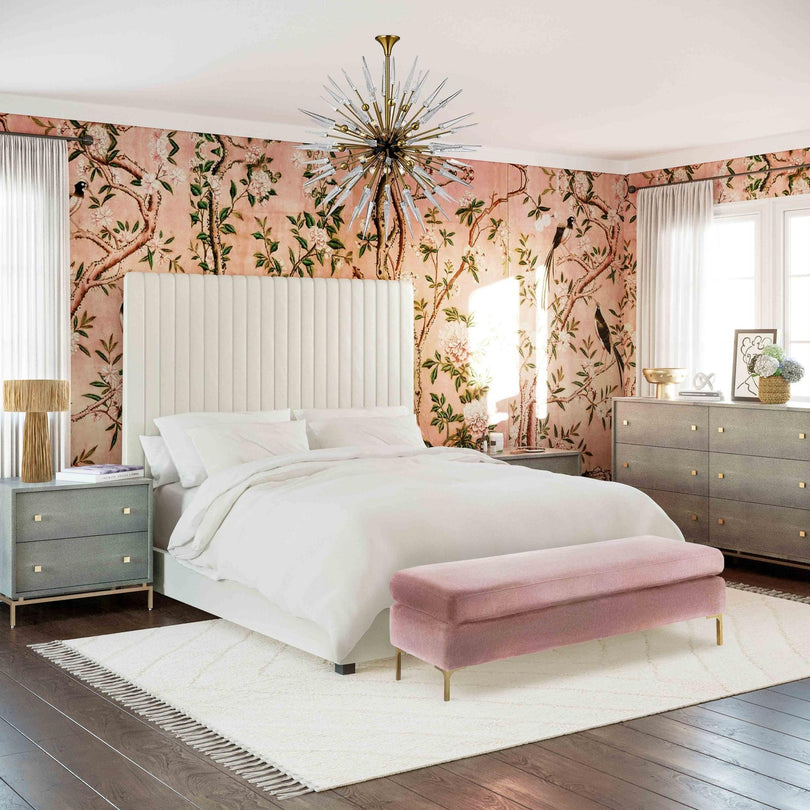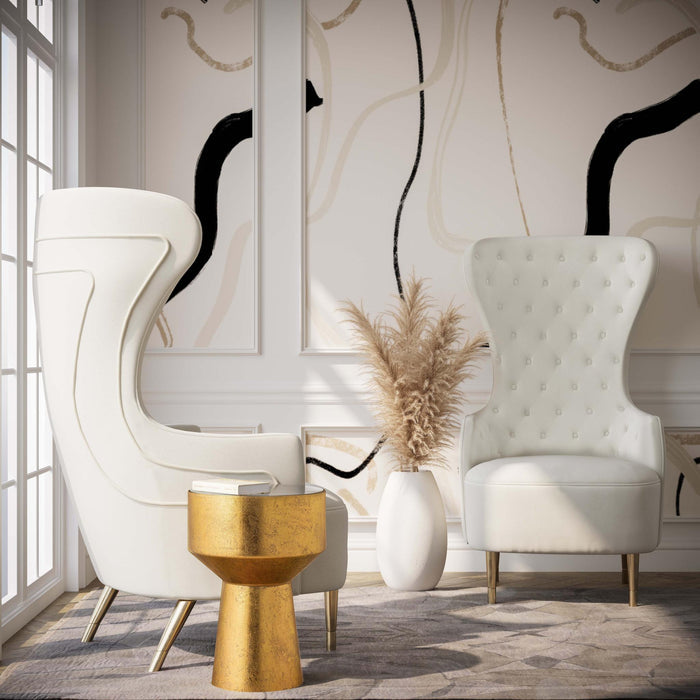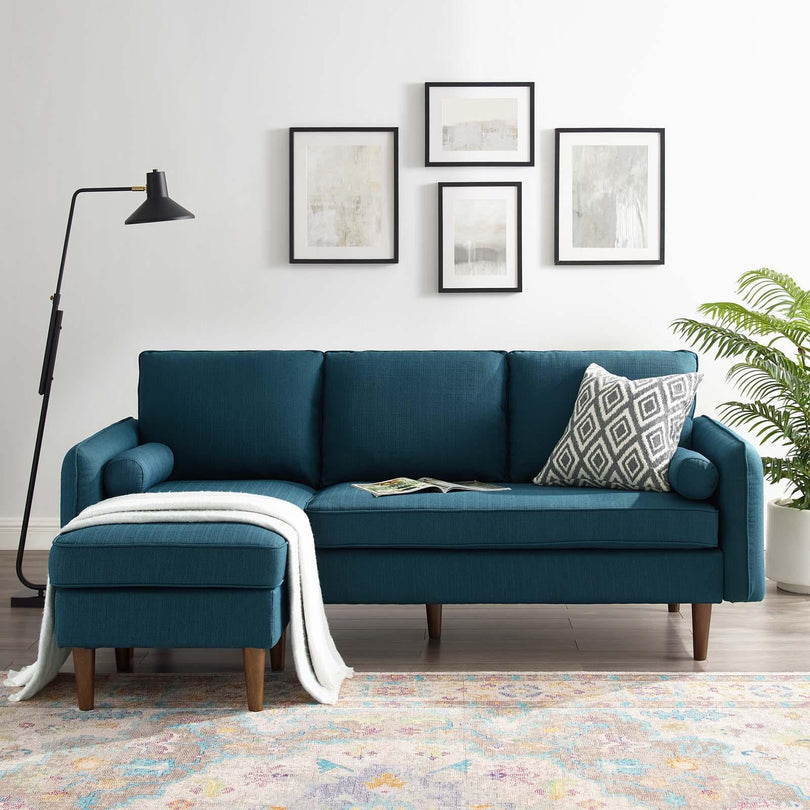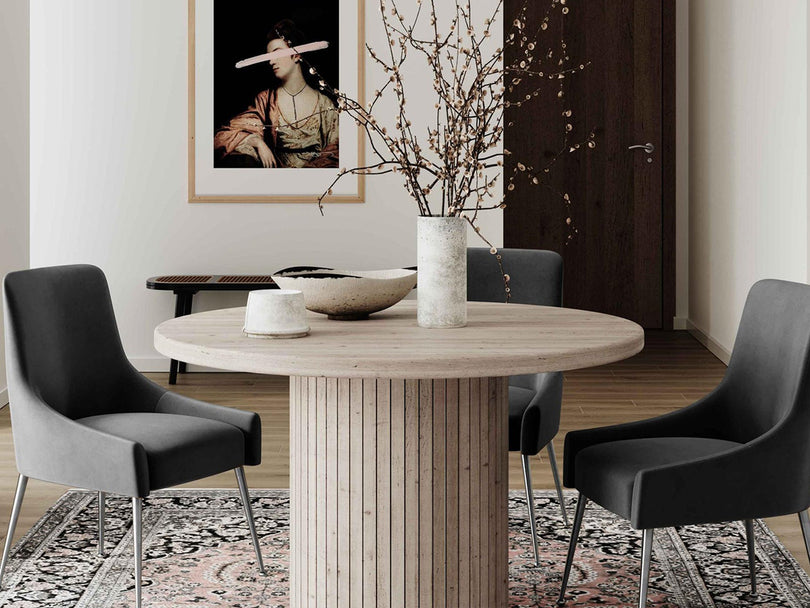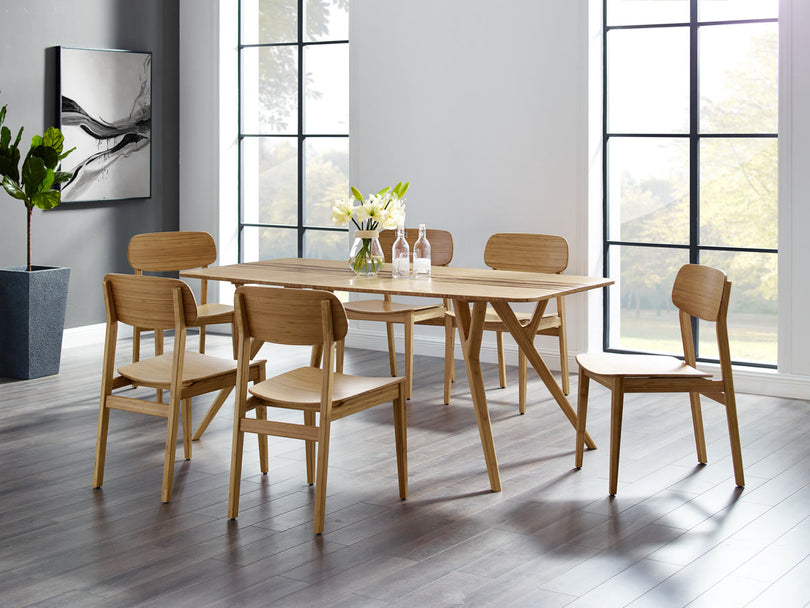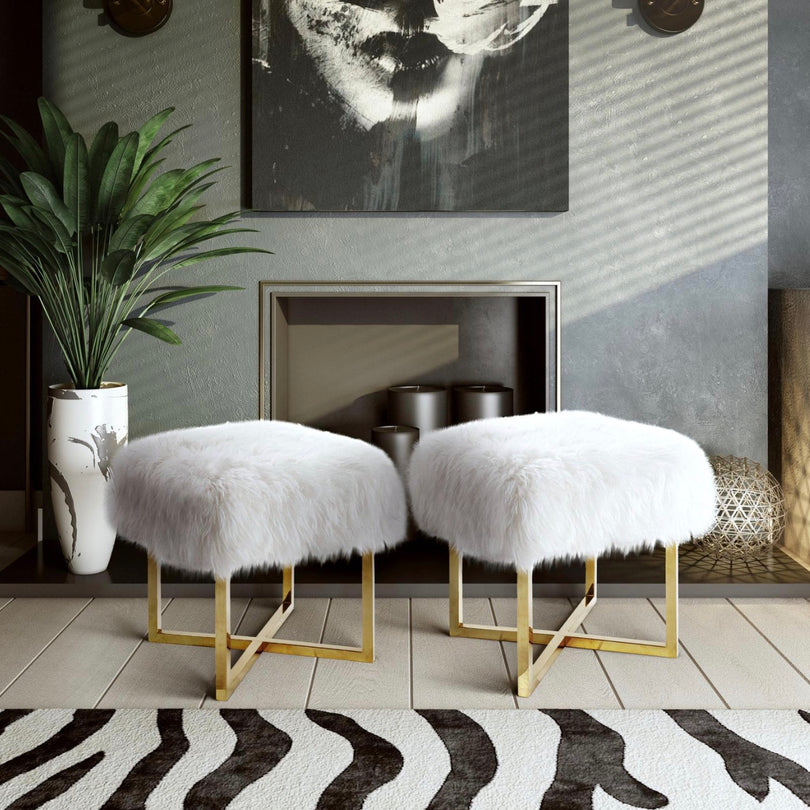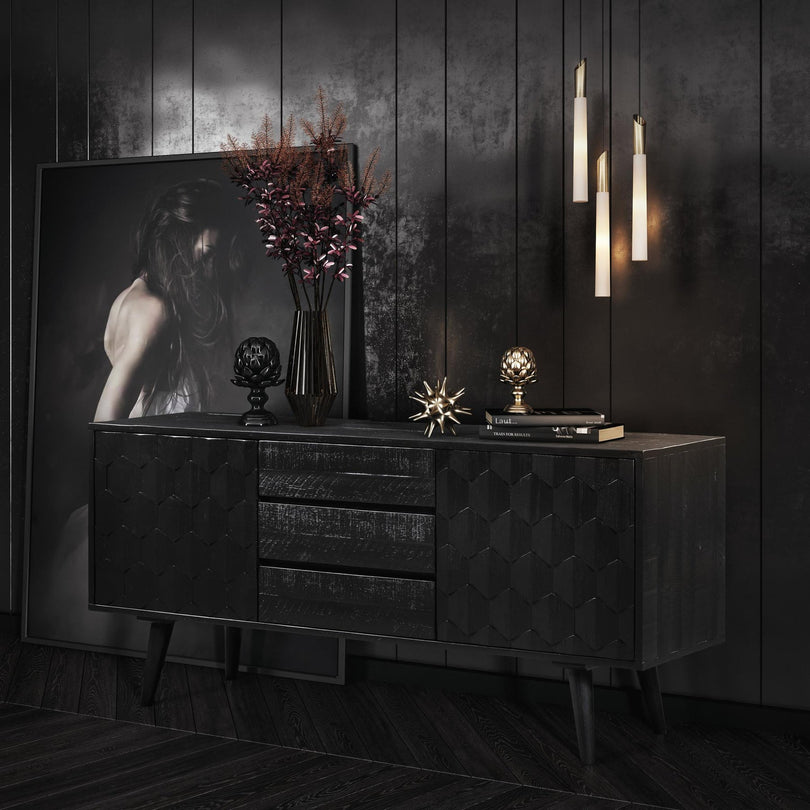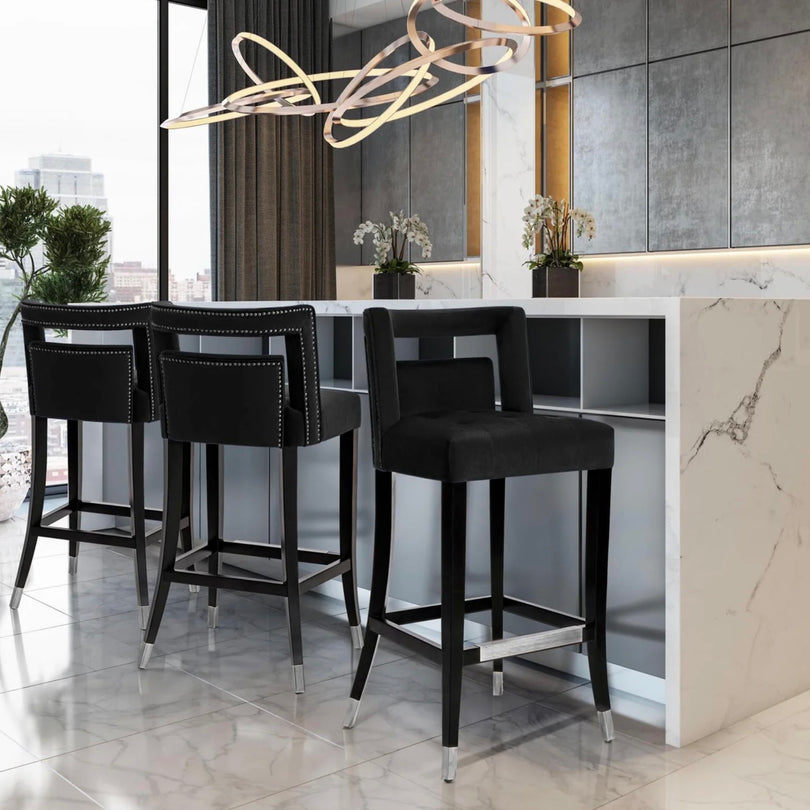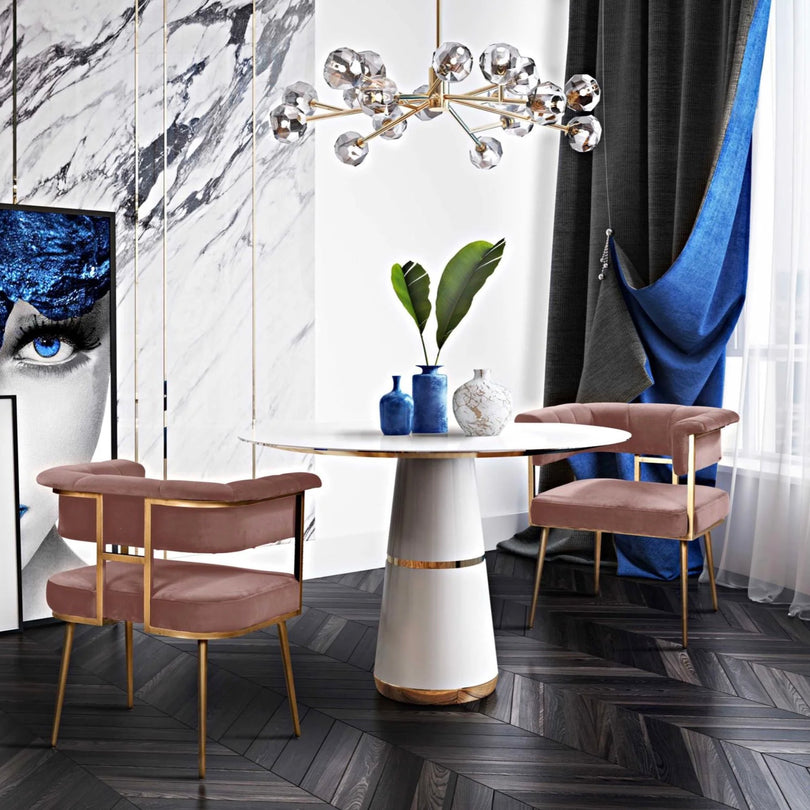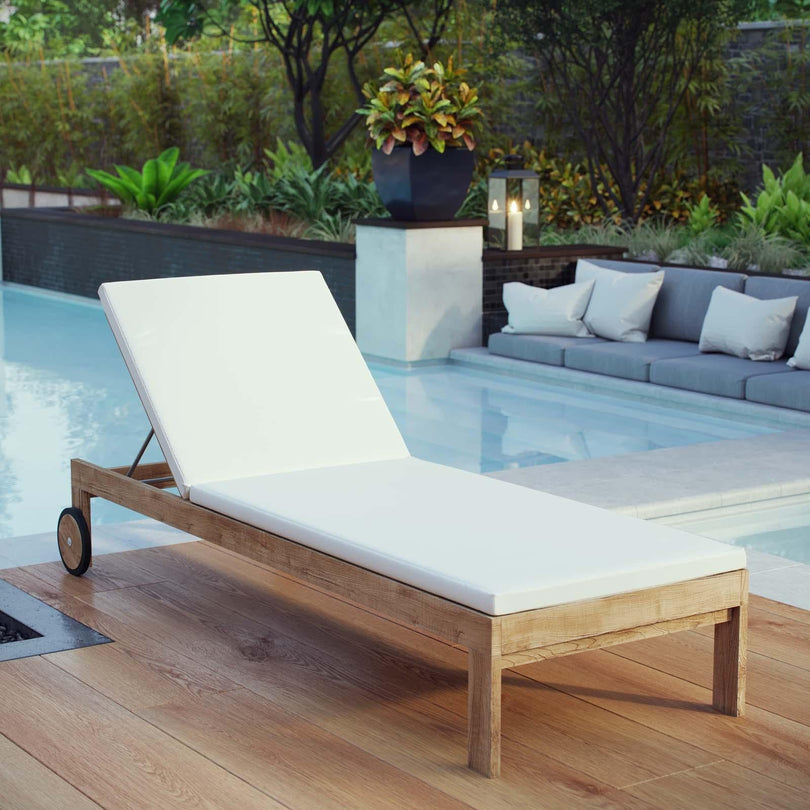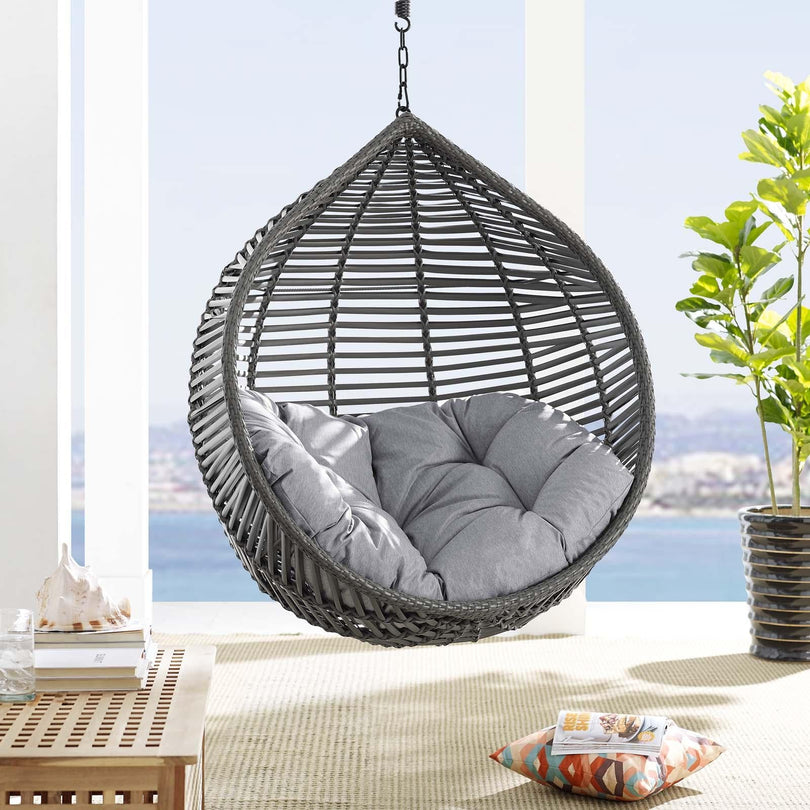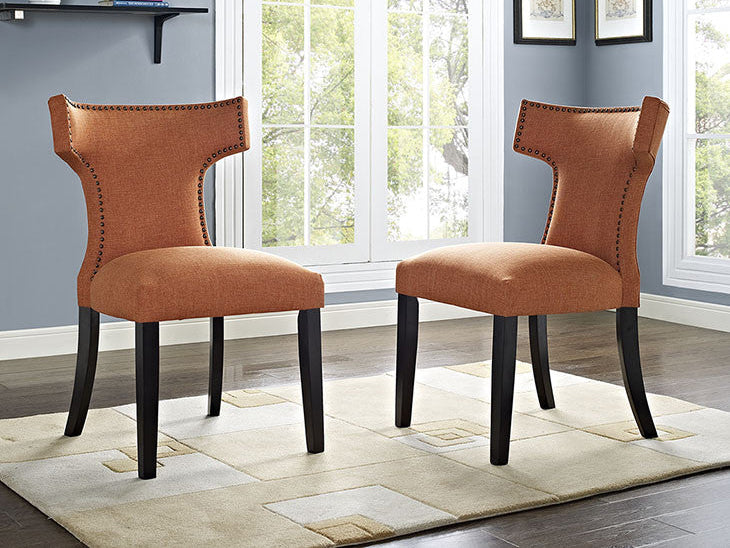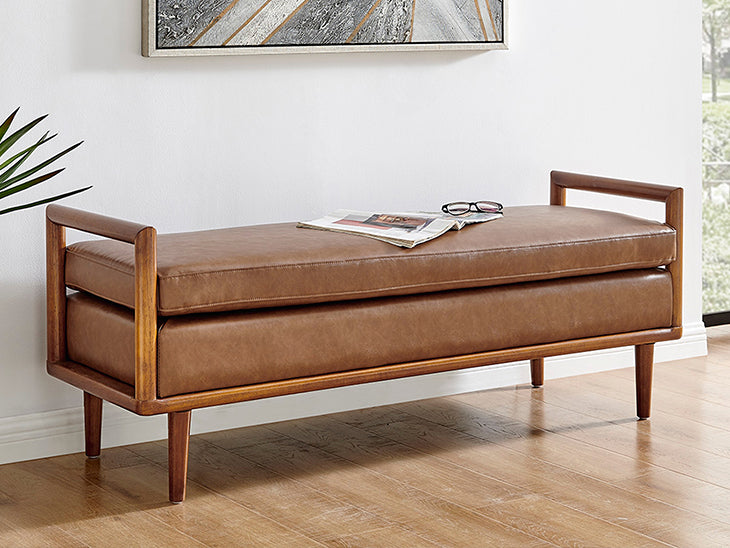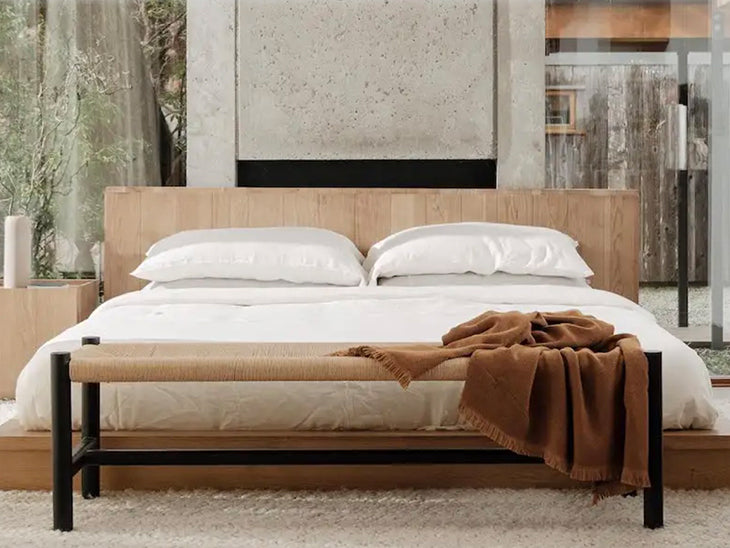Feeling like your space is cluttered? If yes, you're not alone, and the world seems to be singling out one design methodology to address this concern - minimalism. Regarded as the biggest game-changer in the interior design industry, minimalism continues to evolve, defining new perspectives about space, design, and functionality. This article aims to dissect the future of the minimalist aesthetic in the furniture industry by exploring the upcoming trends for 2024. Whether you're a design enthusiast, a millennial looking for your perfect living space, or a business owner anticipating market trends, buckle up to embark on this fascinating journey into the sleek world of minimalist design and the future of global furniture market.
Future of Global Furniture Market
When thinking about the furniture market, grandeur is the name of the game, with an ever-evolving global audience eager to decorate their spaces in style. Over the years, the market has noted impressive growth, adapting to changing consumer preferences and ever-increasing demands. However, what does the future hold for the global furniture market? Let's take a closer look at the expected growth and the burgeoning market value in the coming years.
Expected Growth and Value
Market analysts have been busy painting an optimistic picture of a thriving future for the global furniture market. With rapid urbanization and increased spending on home décor, experts have projected an exciting growth trajectory for this market. Here's a glimpse into the future:
- By 2024, the global furniture market is expected to reach a staggering USD 823.75 billion.
- From 2024 to 2029, the market is anticipated to grow at a compound annual growth rate (CAGR) of 5.25%.
So, what does this mean for furniture manufacturers and customers alike? Simply put, it signifies the era of transformation that the global furniture industry is poised to witness. Increasing consumer interest in sustainable and ethically produced furniture, along with the rising popularity of customized furniture, is fueling this expected growth.
As the market gears up for an expanded consumer base and increased revenue, innovations, quality and design are topping the charts of customer requirements. Furniture manufacturers who can mold their strategies to align with these evolving trends will undoubtedly thrive in this burgeoning market.
The global furniture market's future is dressed in technology, sustainability, and personalized offerings. It promises not just growth in terms of market value but also an evolution of designs that marry aesthetics with functionality. Thus, for those invested in the furniture industry—whether as businesses, consumers, or mere observers—the future promises an exciting era of significant value and substantial growth.
In essence, the highway of the future for the global furniture market is stretched out smoothly, shining brightly with opportunities and inviting all to join the ride. Set entirely on this optimistic landscape, industry stalwarts and novices alike can look forward to an era of sustainable growth, innovation, and satisfying customer needs. So fasten your seat belts and get ready for this exciting journey. The global furniture market of the future is here, and it's time to make the most of it!
Role of Younger Consumers in Furniture Trends
In the dynamic world of ever-evolving tastes and preferences, furniture trends often serve as a mirror to societal shifts. The furniture industry, like any other, is shaped by the consumers driving its market. In recent years, the role of younger consumers - particularly millennials and Gen Z - has become increasingly significant. With their affinity for technology and sustainability, these young tycoons are reshaping the landscape of furnishings, from the living room to the office.
Affinity for Technology in Furniture
The tech-savvy younger generation's fascination with technology has begun to permeate the realm of interior design and furniture as well. Millennials and Gen Z are leading the pack in adopting innovative solutions in everyday life, including their living spaces. Advanced technology incorporation in furniture isn’t merely an afterthought anymore; it’s becoming the norm.
- Furniture with built-in charging ports for tech gadgets
- Seating pieces with integrated speakers
- Smart glass desks that can turn opaque for privacy with a button push
These are just a few examples of the multifunctional furniture pieces integrated with technology that are gaining popularity among younger consumers. It's all about creating a seamless blend of functionality and aesthetics where age-old furnishings are reborn through the lens of modern technology.
Demand for Smart Furniture
The demand for smart furniture further underlines the tech-orientated lifestyle of younger consumers. To them, furniture must be more than just a piece to fill space – it should contribute to a smart, interconnected ecosystem conducive to their high-tech lifestyle.
- Smart beds which monitor sleep patterns and adjust for optimal comfort
- Smart mirrors which give weather updates while you freshen up for the day
- Sofas with adjustable settings controlled via mobile apps for personalized comfort
Indeed, no piece of furniture is too ordinary to be smart. As young consumers continue to drive these trends, manufacturers and designers are prompted to rethink their strategies to cater to this growing segment.
Gen Z and millennials are driving the demand for smart furniture with integrated technology. Thanks to the young, future-forward consumers, what was once the stuff of sci-fi movies might soon become a household norm!
US Furniture Market
Launched into new heights by increased consumer demand, the US furniture market has never looked so appealing. Worth a whopping $244 billion and with an impressive Compound Annual Growth Rate (CAGR) of 3.91% up its sleeve, it's undoubtedly an arena full of opportunities. The ascending trajectory of this market is largely due to the adventures of younger consumers, keen to experiment with their spaces and demand more from their furniture.
Projected Growth and Consumer Demand
The greatest players in any market are always those who can harness and respond to consumer demand. Today's furniture market is no different. Rising trends and an increased demand from younger consumers are driving the projected growth in the US furniture market.
Even as we speak, approximately 49% of retailers in the U.S. are laying down plans to expand their physical stores in the next five years. This move is not just implementation of a fine growth strategy but a strong testament to the confidence in the future of the market.
Today's younger consumers are not just lovers of comfort, they want furniture that tells a story, that is imbued with personality and can give their spaces a certain vibe. They go after functionality, aesthetic pleasure, and most importantly, sustainability. This shift in taste and preference is driving innovation in the furniture industry, with companies now having to think outside the box and even the house to ensure they can keep up.
Just like the old saying, 'The customer is king', understanding consumer needs, especially those of the younger demographic and responding to them aptly is the key to success in the evolving furniture market. Aligning products with lifestyle changes and consumer ethos is no longer an alternative strategy; it has become the new norm.
However, catering to this new wave of consumer demand extends beyond just wanting to meet sales targets. It's about a full, enriching experience that begins right at the time of crafting the marketing message, transcends the point of purchase, and lasts long after the product is delivered. The furniture market, in all its grandeur, is not just about products. It's about people, their homes, their stories, and their lives. Working under this perspective, the sky is the limit. And thus, the US furniture market sails forth, bound for greatness.
Commercial Segment in Furniture Market
Just like every room invites you with its unique personality, every market segment in the world of furniture has its distinct charm and audience. As we delve into the intricacies of the commercial segment, you'll see a beautiful blend of creativity, comfort, and efficiency. This segment, an important part of the furniture market, is on a robust growth path and here's why.
Market Share and Anticipated Growth
At its core, the commercial segment oscillates between functional design and aesthetic appeal. Although often overlooked, the significance of this furniture segment is underlined by the market share it secured in 2024. The statistics reveal a remarkable growth story as the commercial segment claimed a substantial 45.7% market share that year, quite a noteworthy achievement considering the diverse and competitive landscape of the furniture market.
Now that's impressive, but it's not just about past glory. We're looking at an anticipated consistent growth in the coming years. As the demand for compatible and elaborate workspaces increases, the commercial segment stands at an advantage. The projections show this segment growing at a healthy Compound Annual Growth Rate (CAGR) of 5.7% through 2034.
This growth can be attributed to several trend-setting factors:
- An upsurge in the start-up culture
- The popularity of coworking spaces
- The increasing adoption of ergonomic designs in office furniture
To put it succinctly, the commercial furniture market is not just surviving; it is thriving. This lucrative domain is driven by smart, versatile designs that seamlessly blend functional benefits with aesthetic appeal. As business environments continue to evolve, it's safe to say, so will the commercial segment of the furniture market. A venue where aesthetic charm coexists with utility, the commercial segment enjoys a well-deserved spotlight in the landscape of the furniture market. And clearly, it's here to stay, to grow and, to play a dominant role in the future of furniture designs.
Eco-friendly Furniture Trends
The conversation around eco-friendliness has inevitably found its way into the realm of furniture design, marking a notable shift in the industry's trends. Rising climate consciousness has led to a significant surge in demand for eco-friendly furniture. From all-natural materials and non-toxic finishes to manufacturing processes with a reduced carbon footprint, this trend has positively impacted the industry and our planet in several ways.
Projected Growth and Preference
The data speaks volumes about this shift towards sustainability. The global market for eco-friendly furniture is expected to grow at a Compound Annual Growth Rate (CAGR) of 5.8% between 2019 and 2024. This impressive growth rate is an encouraging indication that the world is gravitating towards furniture pieces that don't sacrifice the Earth's welfare.
What's catalysing this departure from traditional furniture?
Foremost, consumers are increasingly aligning their purchasing choices with their values. As environmental awareness heightens, more people prefer furniture crafted from eco-friendly materials. This inclination to ethical consumption isn't just a mere fad; rather, it's a transition that projects consciousness, responsibility, and care for the planet.
In addition, eco-friendly furniture offers a range of practical benefits. For instance, furniture designed with non-toxic finishes helps maintain healthier indoor air quality. Likewise, pieces crafted from robust, sustainably sourced materials can have a longer lifespan, offering consumers better value for their investment.
To tap into this growing trend, many furniture manufacturers are prioritizing sustainability in their design and production processes. From using recycled materials to reducing energy consumption during the manufacturing process, these brands are leading the charge into a more sustainable future.
To sum up, the rise of eco-friendly furniture is not only a win for our planet but also for forward-thinking businesses and consumers striving for a healthier, sustainable living environment. This transformative trend continues to shape the furniture industry - underlining the power of mindful consumption in conserving our environment.
Keep an eye out for this evolving trend. Your next furniture purchase could be a stylish addition to your decor, a valuable long-term investment, and a small but significant contribution to a more sustainable world.
Minimalist Furniture Trends For 2024
Minimalist design continues to be foremost amongst leading styles in the world of interiors. With an emphasis on simplicity, functionality, and understated beauty, minimalist design principles are encapsulated in the phrase 'less is more'. But what does this look like in 2024? We have a good idea based on several emerging trends: functionality combined with geometry and neutrality, a discernible shift towards warm minimalism, and an increased preference for curved furniture.
Functionality, Geometry, and Neutrality
Under the minimalist design umbrella, functionality, geometry, and neutrality define the aesthetical landscape for 2024. Minimalist furniture trends focus not only on creating pieces that are sleek and simple, but also efficiently utilize space and serve multiple purposes. Geometric patterns, straight lines, and the smart inclusion of nature-inspired elements reflect the beauty in the mundane. Neutrality remains the backbone of minimalism. White, grey, black, and other earth tones reign supreme, grounding the space with a calming and timeless palette.
Shift Towards Warm Minimalism
As we move further into 2024, there is a noticeable shift towards warm minimalism. This trend moves away from stark, white, cold interiors towards spaces that ooze coziness while retaining the minimalist principles of simplicity, functionality, and order. It encourages mindfulness and sustainability, prompting one to carefully consider pieces that will stand the test of time. Organic materials, tactile fabrics, rich hues, and warm lighting are all characteristic of this trend.
Preference for Curved Furniture
Lastly, one of the significant changes in minimalism, which seems to defy the conventional, is a growing preference for curved furniture. Sofas, coffee tables, and even mirrors are demonstrating soft lines and patterns that add an element of fluidity and comfort to minimalist spaces. These curvilinear forms are much more inviting and create a sense of balance within both small and large spaces.
The Best Minimalist Furniture Trends for 2024 blend functionality, warm minimalism, and inviting curvature to deliver an aesthetic that is sleek yet welcoming, minimal yet sustainable. After all, minimalism is not about subtracting things from your life—it's about adding value. And the interior design trends of 2024 are richer for it.
Influence of Japandi Design on Minimalism
Delving into the world of interior design trends, we venture into a corner where the serene meets the sleek—welcome to Japandi. This trending style, as the name suggests, beautifully marries Japanese and Scandinavian design principles, infusing minimalist spaces with a cosy blend of calming sophistication. Unearthing the symbiotics of this blend, one can't help but admire the striking influence Japandi has on Minimalism.
Japandi is a prime example of the paradox "less is more." With simple forms, natural materials, functionality and a subtle colour palette, it achieves a comforting, airy ambience despite minimal decor. It's an aesthetic direction that encourages us to slow down, connect with our surroundings, and find beauty in subtlety and tranquillity.
A few key Japandi elements are:
- Natural and Sustainable Materials: Elements like footed wooden furnishings, woven seagrass mats, and stone accents ooze natural appeal in Japandi interiors. Such items not only contribute to a serene environment due to their earth tones but also emphasize sustainable design—a primary principle of both Japanese and Scandinavian styles.
- Monochromatic Colour Palette: Japandi leans towards subdued and neutral colour schemes. Soft greys, off-whites, muted blues and natural greenery are typical in these spaces. This deed choice is a purposeful rejection of loud, bold colours to spark a calming, relaxing environment.
- Elegantly Functional Design: Consistent with the minimalist design theory, each piece in a Japandi space has a purpose. There is an intentional absence of unnecessary accessories, helping the room remain clutter-free and focused.
When diving into the influence of Japandi on Minimalism, we inevitably see a warming trend. In comparison to the traditionally cold and stark minimalistic style, this approach infuses warmth and comfort without compromising on the 'less is more' Minimalist ethos. It's representative of the evolving needs of homeowners who want simplicity without sacrificing homeliness.
"The Japandi interior trend combines Japanese and Scandinavian design influences, bringing a cosy warmth to minimalist spaces."
Summing up, Madeline Hughes, interior designer and Japandi enthusiast, puts it beautifully: "Japandi design creates minimalist spaces that feel warm, inviting, and tranquil. They aren't just spaces to exist in, but spaces to live in. It's minimalism that feels like home."
In essence, the Japandi trend doesn't simply colour within the Minimalist lines—it expands the shape, opens up new dimensions, and resonates with individuals seeking balance in design and life. By doing so, it continues to significantly influence and redefine the realm of modern Minimalism.
Conclusion
As we prepare to usher in a new era of furniture design in 2024, it's clear that the influence of minimalism, bolstered by younger consumers' demand for smart, functional appliances, and the fascinating fusion of Scandinavian and Japanese (Japandi) styles, will be at the heart of it. From a market explosion in eco-friendly furniture to an upswing in minimalist furniture trends, each upcoming innovation promises to shape our spaces into functional, aesthetic, and environmental statement pieces.
Whether you're an interior designer staying abreast of the latest trends or simply seeking to elevate your own living space, understanding these shifts can offer valuable insights into where the future of interior design is heading. If you are on a quest for comfort, functionality, and aesthetics grounded in simplicity, our curated collection at Minimal & Modern is designed to meet all of these crucial criteria - and more. Feeling enlightened and inspired? Perhaps it's time to embark on your journey toward creating a minimalist, modern, and environmentally friendly space that you can call your own.
Frequently Asked Questions
-
What are some upcoming furniture design trends in 2024?
Some upcoming furniture design trends in 2024 include minimalist and multi-functional furniture, sustainable and eco-friendly materials, modular and customizable pieces, and incorporation of technology in furniture design.
-
How can I incorporate minimalism into my home decor?
To incorporate minimalism into your home decor, focus on decluttering and keeping only essential items, opt for furniture with clean lines and neutral colors, use natural light and open spaces to create a sense of simplicity, and choose quality over quantity.
-
What are the benefits of choosing multi-functional furniture?
Choosing multi-functional furniture provides several benefits such as saving space in small living areas, maximizing functionality and versatility, allowing for easy organization and storage, and adapting to different needs and preferences.
-
Why is sustainability important in furniture design?
Sustainability in furniture design promotes environmental conservation, reduces waste and carbon footprint, supports ethical practices in manufacturing, and ensures the use of non-toxic and renewable materials, contributing to a healthier planet.
-
How can technology be incorporated into furniture design?
Technology can be incorporated into furniture design through the integration of smart features such as wireless charging capabilities, built-in speakers or screens, adjustable settings controlled via mobile apps, and innovative use of materials for enhanced comfort and convenience.

